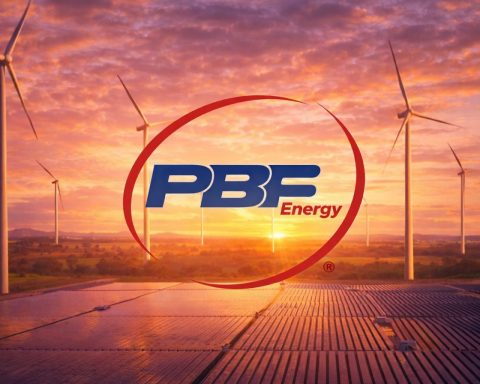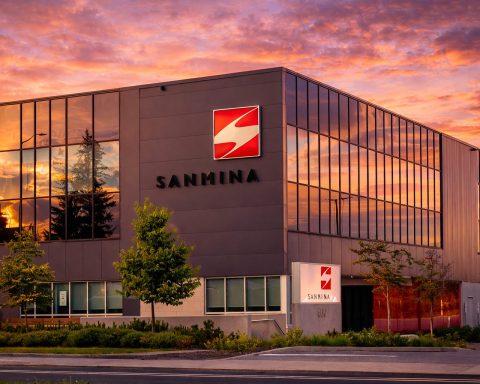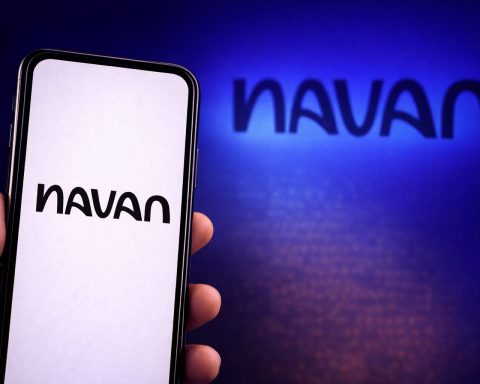Eos Energy Enterprises (NASDAQ: EOSE) continues to be one of the most volatile — and most closely watched — names in the energy storage space. On Tuesday, November 25, 2025, EOSE stock finished around $13.40, up roughly 2% on the day, after trading between about $12.62 and $14.20 on heavy volume of nearly 19.4 million shares.
That move comes as the market digests a massive $1.04 billion financing package Eos closed on Monday — a deal that materially boosts the company’s liquidity, but also raises fresh questions about dilution, execution risk, and long‑term profitability. [1]
Below is a deep dive into what happened today with EOSE stock, the new financing, and what investors are watching next.
EOSE stock today: where the shares stand
At today’s close near $13.40, EOSE sits in the middle of an exceptionally wide 52‑week range of roughly $2.5 to just under $20. [2]
Key snapshot as of November 25, 2025:
- Last price: ≈ $13.40
- Daily move: +$0.27 (about +2.1%)
- Intraday range: ≈ $12.62 – $14.20
- Market cap: roughly $4 billion, depending on intraday price source [3]
- 52‑week range: about $2.5 – $19.9 [4]
- Volatility: beta just over 2, meaning the stock tends to move more than twice as much as the broad market [5]
Over the last year, EOSE has been a spectacular mover: the shares have climbed well over 300% on a 12‑month basis and recently traded near a 52‑week high around the high‑teens. [6]
In other words, even after pulling back from recent highs, today’s $13–14 price represents a multi‑bagger compared with where the stock traded a year ago — but also leaves plenty of room for large swings in either direction.
The big news: Eos raises $1.04 billion to fund growth
The main driver behind today’s focus on EOSE isn’t a headline released this morning, but the financing package Eos closed on November 24.
Two deals, one balance‑sheet reset
Eos completed two linked transactions totaling about $1.04 billion in gross proceeds: [7]
- $600 million convertible senior notes (due 2031)
- Coupon: 1.75% annual interest
- Maturity: 2031
- Net proceeds: about $580.5 million
- Registered direct equity offering
- Shares sold: about 35.9 million
- Price: $12.78 per share
- Gross proceeds: roughly $458.2 million
According to company disclosures, the primary uses of proceeds are: [8]
- Repurchase of $200 million of existing 6.75% convertible senior notes due 2030
- Adding approximately $474 million in net cash to the balance sheet (before expenses)
- Continuing to fund manufacturing expansion and commercial growth
The transaction was described as oversubscribed, suggesting strong institutional demand for the new securities even after EOSE’s sharp run‑up this year. [9]
DOE warrants and public warrant exercises
The financing also tightens Eos’s relationship with the U.S. Department of Energy (DOE):
- Eos issued the DOE a warrant to purchase up to 570,000 shares of common stock, giving the federal government equity upside tied to DOE‑backed financing. [10]
Separately, Eos recently announced that holders of its exchange‑listed public warrants (EOSEW) exercised roughly 6.7–7 million warrants before those securities expired on November 17, bringing in an additional $76.9–$80.2 million of cash. [11]
Bottom line: between the convert, the equity raise, and warrant exercises, Eos has significantly fortified its near‑term liquidity — but at the cost of more debt, potential future dilution from conversion, and a higher current share count.
How much dilution are we talking about?
Before this deal, Eos had about 288 million shares outstanding. [12] Issuing roughly 35.9 million new shares in the direct offering alone represents a 12–13% increase in the share count, before factoring in: [13]
- Shares issued from public warrant exercises
- Potential future shares from the new convertible notes
- DOE warrant shares
The new convert has an initial conversion price in the mid‑teens (around $16.29, according to some coverage), implying meaningful upside for noteholders if the stock trades well above today’s level over time. [14]
For existing shareholders, that trade‑off is clear:
- Positive:
- Lower interest rate vs older 6.75% notes
- Longer maturity (2031 vs 2030)
- Hundreds of millions in incremental cash to fund growth
- Negative:
- Higher leverage in the form of another large convertible note
- Ongoing risk of equity dilution, especially if more capital is needed before the business reaches sustainable profitability
That tension — liquidity versus dilution — is at the center of today’s EOSE stock debate.
Q3 2025 earnings: record revenue, heavy losses
The financing didn’t happen in a vacuum. It follows third‑quarter 2025 results, reported on November 5, that showed rapid growth but still‑deep losses. [15]
Top‑line growth
In Q3 2025, Eos reported:
- Revenue of about $30.5 million, roughly double the second quarter and dramatically higher than the same period a year ago
- A commercial opportunity pipeline of $22.6 billion, representing around 91 GWh of potential long‑duration storage projects
- Order backlog of ~$644 million as of September 30, 2025 [16]
Despite this growth, revenue fell short of Wall Street expectations (consensus was around $39.6 million, per MarketBeat). [17]
Profitability still far away
On the bottom line, the picture remains challenging:
- Q3 GAAP EPS came in around –$2.77, far worse than the roughly –$0.31 loss analysts were expecting [18]
- Separate transcript coverage points to a net loss in the hundreds of millions, inflated by large non‑cash adjustments and write‑downs [19]
- On a trailing 12‑month basis, Eos has generated about $63 million in revenue against nearly $2 billion in net losses and a heavily negative gross margin (around –178%) [20]
Management does, however, still expect full‑year 2025 revenue of $150–160 million and is targeting a ramp to an annualized 2 GWh production run‑rate by the end of this year, with more than 3x output in Q4 vs Q3 as automation improves at its Turtle Creek facility. [21]
Big pipeline, big projects: Frontier, MN8, Talen and more
Eos’s bullish case rests on converting its large pipeline and backlog into revenue at improving margins.
Recent highlights include: [22]
- A 228 MWh order from Frontier Power in the UK, tied to multi‑site long‑duration storage demonstrations
- A supply agreement with MN8 Energy for up to 750 MWh of Eos’s zinc‑based Z3™ systems for U.S. renewable projects
- A strategic collaboration framework with Talen Energy targeting multi‑gigawatt‑hours of storage capacity across Pennsylvania, designed to support grid resilience and growing data‑center demand
Post‑quarter, Eos said these and other wins pushed new orders to nearly 1 GWh, underlining rising interest in zinc‑based alternatives to lithium‑ion for 4–16+ hour storage applications. [23]
Project AMAZE, DOE loan and the Pittsburgh build‑out
The new financing arrives on top of a previously announced DOE‑backed loan and a major U.S. manufacturing expansion.
DOE Title 17 loan and Project AMAZE
In late 2024, Eos closed a $303.5 million loan guaranteed by the U.S. Department of Energy (DOE) under the Title 17 program. The loan is intended to support Project AMAZE (American Made Zinc Energy), Eos’s plan to expand production to 8 GWh per year by 2027 and create up to 1,000 jobs in Pennsylvania’s Mon Valley region. [24]
Project AMAZE, together with private capital and state incentives, is meant to anchor Eos as a major domestic supplier of non‑lithium long‑duration storage — a space that may benefit from U.S. industrial policy, IRA tax credits and growing data‑center energy needs.
HQ move and Pennsylvania expansion
Eos is also deepening its roots in Western Pennsylvania:
- The company plans to relocate its headquarters to Pittsburgh’s North Side, occupying office space at Nova Place
- It intends to invest more than $350 million in regional manufacturing capacity, including a 432,000‑square‑foot facility in Marshall Township
- The expansion comes with a state‑level economic development package worth roughly $22–24 million, alongside a newly announced software hub focused on Eos’s DawnOS™ platform [25]
For long‑term investors, these moves strengthen the narrative of Eos as a scaled U.S. manufacturer rather than a small technology shop — but they also increase fixed costs and execution risk if demand falls short of the pipeline.
How Wall Street views EOSE after the deal
Analyst and research coverage paints a mixed but generally constructive picture.
- Data from StockAnalysis and others show an overall “Buy” consensus rating on EOSE, with an average price target around $12–13, very close to where the stock trades today. [26]
- Stifel recently reiterated a Buy rating and a $22 price target after the financing, framing the capital raise as a necessary step to support growth. [27]
- Other firms, like Roth Capital, are more cautious, maintaining neutral stances and more modest price objectives while forecasting ongoing losses into 2026. [28]
Fundamental‑data platforms such as Simply Wall St highlight: [29]
- Extremely rapid forecast growth — some models see revenue reaching roughly $1.4 billion and turning profitable by 2028
- Yet also weak gross margins, large cumulative losses, heavy leverage and dilution risk
- Fair‑value estimates clustered around the mid‑teens (one notable figure is about $15.21 per share), implying moderate upside from current levels but with wide uncertainty bands
In short, the Street largely agrees that Eos sits at the center of an attractive structural theme (long‑duration storage + U.S. manufacturing + AI‑driven power demand) — but is divided on whether its balance sheet and economics will ultimately justify today’s valuation.
Key risks EOSE investors should keep in mind
For traders and longer‑term investors watching EOSE after today’s move, several risk factors stand out:
- Ongoing cash burn and future raises
Even with over $1 billion in new financing and warrant proceeds, Eos is still burning cash and has not yet proven it can operate profitably at scale. Additional capital raises — and more dilution — remain possible if margins don’t improve quickly enough. [30] - Negative margins and manufacturing execution
Trailing gross margin is deeply negative, and the path to profitability depends on achieving the cost reductions and efficiency gains promised from automation, higher volumes and the Project AMAZE expansion. [31] - Convertible overhang and share‑price volatility
Large outstanding convertibles (old and new), plus warrants, make the capital structure complex and can cap upside if investors anticipate future conversion pressure. The stock’s high beta and history of 20%+ daily moves underline this volatility. [32] - Technology and competitive risk
While Eos’s zinc‑based Znyth™ and Z3™ systems offer a non‑flammable alternative to lithium‑ion, the broader long‑duration storage field is highly competitive and still evolving, with flow batteries, thermal storage, and other chemistries vying for share. [33] - Policy and DOE‑loan compliance
Project AMAZE relies partly on DOE support and government incentives. Failing to meet loan covenants, project milestones, or changing policy conditions could impact access to that capital. [34]
What to watch next for EOSE stock
Looking beyond today’s close, here are the catalysts and datapoints likely to matter most for EOSE in the coming weeks and months:
- Q4 2025 results and 2026 guidance – Can Eos hit its $150–160 million revenue target for 2025 and show a credible roadmap to narrowing losses? [35]
- Production ramp to 2 GWh – Evidence that the Turtle Creek facility has reached the promised annualized run‑rate, with better unit economics, will be critical to support the bull case. [36]
- Backlog conversion and new orders – Investors will want to see the $22.6 billion pipeline and $644 million backlog convert into revenue at healthy margins, not just remain headline figures. [37]
- Updates on Project AMAZE and the Pittsburgh expansion – Progress on new lines, HQ relocation, and job creation will signal whether the company is on track for its 8 GWh capacity ambitions. [38]
- Market reaction to the new capital structure – How the stock trades as the new convertibles and shares are absorbed, and whether Eos can avoid additional near‑term raises, will shape sentiment. [39]
For now, EOSE remains a high‑beta, high‑risk, high‑potential story: a company with a rapidly expanding pipeline and powerful policy tailwinds, but also a history of large losses, complex financing and significant execution risk.
Important note
This article is for informational and news purposes only and does not constitute financial or investment advice. EOSE is a volatile stock; anyone considering an investment should do their own research, review the company’s SEC filings and risk factors, and consider speaking with a qualified financial advisor before buying or selling shares.
References
1. www.globenewswire.com, 2. finance.yahoo.com, 3. finance.yahoo.com, 4. investors.eose.com, 5. stockanalysis.com, 6. ng.investing.com, 7. www.globenewswire.com, 8. www.globenewswire.com, 9. www.globenewswire.com, 10. www.globenewswire.com, 11. sustainabilitymag.com, 12. stockanalysis.com, 13. www.investing.com, 14. www.investing.com, 15. finance.yahoo.com, 16. www.nasdaq.com, 17. www.marketbeat.com, 18. www.marketbeat.com, 19. www.investing.com, 20. stockanalysis.com, 21. www.nasdaq.com, 22. www.nasdaq.com, 23. www.nasdaq.com, 24. www.stocktitan.net, 25. www.axios.com, 26. stockanalysis.com, 27. www.investing.com, 28. www.marketbeat.com, 29. simplywall.st, 30. stockanalysis.com, 31. stockanalysis.com, 32. stockanalysis.com, 33. www.nasdaq.com, 34. www.stocktitan.net, 35. www.nasdaq.com, 36. www.nasdaq.com, 37. www.nasdaq.com, 38. www.stocktitan.net, 39. www.streetinsider.com







